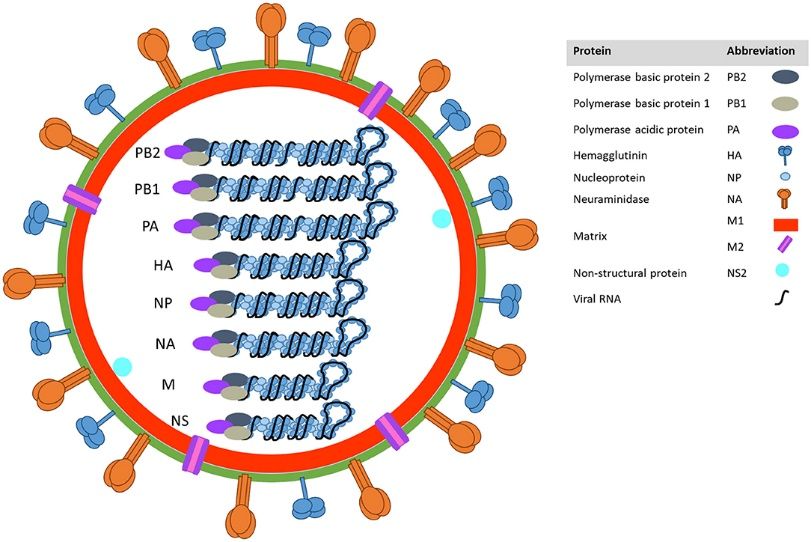How Disinfection Services Help Combat Infectious Diseases
In the wake of global health challenges, such as the COVID-19 pandemic, the importance of effective disinfection practices has never been more evident. Disinfection services play a pivotal role in controlling and preventing the spread of infectious diseases across various environments, including homes, workplaces, healthcare facilities, and public spaces. This comprehensive guide explores how professional disinfection services contribute to combating infectious diseases, highlighting their methods, benefits, and the critical role they play in maintaining public health.
Table of Contents
-
Introduction
-
Understanding Infectious Diseases
-
The Role of Disinfection Services
-
Types of Disinfection Services
-
Methods and Technologies Used
Key Benefits of Professional Disinfection Services
-
Effective Pathogen Elimination
-
Comprehensive Coverage
-
Safety and Compliance
-
Time and Resource Efficiency
Disinfection in Various Settings
-
Healthcare Facilities
-
Educational Institutions
-
Commercial and Office Spaces
-
Residential Homes
-
Public Transportation and Venues
Case Studies and Success Stories
-
Hospitals Preventing Healthcare-Associated Infections
-
Schools Maintaining Safe Learning Environments
-
Businesses Ensuring Workplace Safety
Choosing the Right Disinfection Service Provider
-
Certifications and Standards
-
Experience and Expertise
-
Customized Solutions
-
Reputation and Reviews
Challenges and Considerations
-
Choosing Appropriate Disinfectants
-
Ensuring Safety for Occupants
-
Environmental Impact
Future Trends in Disinfection Services
Conclusion
Additional Resources
Introduction
Infectious diseases pose a significant threat to public health, economies, and daily life. Effective disinfection is a cornerstone in the fight against these diseases, aiming to reduce pathogen load in various environments and prevent transmission. While individuals can perform basic cleaning and disinfection at home, professional disinfection services offer a higher level of expertise, technology, and comprehensive coverage necessary to combat infectious agents effectively.
Understanding Infectious Diseases
Infectious diseases are illnesses caused by pathogenic microorganisms such as bacteria, viruses, fungi, and parasites. These diseases can spread directly from person to person, through contaminated surfaces, airborne particles, or vectors like insects. Effective control and prevention of infectious diseases rely on multiple strategies, including vaccination, hygiene practices, and disinfection.
Common Infectious Diseases
-
Respiratory Infections: Influenza, COVID-19, tuberculosis.
-
Gastrointestinal Infections: Norovirus, Salmonella, E. coli.
-
Healthcare-Associated Infections (HAIs): MRSA, Clostridioides difficile.
-
Vector-Borne Diseases: Malaria, dengue fever, Lyme disease.
The Role of Disinfection Services
Disinfection services are specialized cleaning processes aimed at eliminating or reducing harmful microorganisms on surfaces and environments. These services are crucial in settings where hygiene and sanitation are paramount, such as hospitals, schools, offices, and public transportation.
Types of Disinfection Services
-
Routine Cleaning and Disinfection: Regular maintenance cleaning combined with disinfection of high-touch areas.
-
Deep Cleaning and Disinfection: Comprehensive cleaning targeting all surfaces, including hard-to-reach areas, often using advanced technologies.
-
Emergency Disinfection: Rapid response services for outbreaks, spills, or contamination incidents.
-
Specialized Disinfection: Tailored services for specific environments, such as healthcare facilities or food processing plants.
Methods and Technologies Used
-
Chemical Disinfectants: Use of approved chemical agents like bleach, hydrogen peroxide, quaternary ammonium compounds.
-
Ultraviolet (UV) Light Disinfection: Utilizes UV-C light to kill or inactivate microorganisms.
-
Electrostatic Spraying: Ensures even coverage of disinfectants on surfaces.
-
Fogging and Mist Systems: Creates a fine mist of disinfectant for thorough coverage in large or complex spaces.
-
Ozone Treatment: Uses ozone gas to eliminate pathogens, suitable for specific applications.
Key Benefits of Professional Disinfection Services
Effective Pathogen Elimination
Professional disinfection services utilize high-grade disinfectants and advanced technologies to ensure thorough elimination of pathogens. Their expertise ensures that disinfection processes are carried out correctly, targeting all potential sources of infection.
Comprehensive Coverage
Professional services assess and address all areas of concern, including high-touch surfaces, hidden spaces, and ventilation systems. This comprehensive approach reduces the likelihood of recontamination and ensures a safer environment.
Safety and Compliance
Professional disinfection providers adhere to industry standards and regulatory guidelines, ensuring that disinfection practices are safe for both occupants and the environment. They are trained to handle hazardous chemicals and implement safety protocols effectively.
Time and Resource Efficiency
Outsourcing disinfection tasks allows organizations to focus on their core activities without diverting resources to manage cleaning processes. Professional services offer flexible scheduling to minimize disruption and ensure timely completion.
Disinfection in Various Settings
Healthcare Facilities
Importance: Hospitals and clinics are high-risk environments for the spread of infections due to the presence of vulnerable patients and frequent use of invasive procedures.
Disinfection Practices:
-
Regular disinfection of patient rooms, operating theaters, and common areas.
-
Terminal cleaning after patient discharge or transfer.
-
Use of hospital-grade disinfectants and advanced technologies like UV disinfection robots.
Impact: Significant reduction in healthcare-associated infections (HAIs), improved patient outcomes, and enhanced safety for healthcare workers.
Educational Institutions
Importance: Schools and universities host large numbers of students and staff, making them hotspots for the transmission of infectious diseases.
Disinfection Practices:
-
Daily disinfection of classrooms, restrooms, cafeterias, and common areas.
-
Implementation of hand hygiene stations and sanitization protocols.
-
Use of environmentally friendly disinfectants to ensure safety for children.
Impact: Maintained continuity of education, reduced absenteeism due to illness, and creation of a safe learning environment.
Commercial and Office Spaces
Importance: Offices and commercial buildings are frequented by many individuals daily, increasing the risk of disease transmission.
Disinfection Practices:
-
Regular disinfection of workstations, meeting rooms, kitchens, and restrooms.
-
Use of electrostatic spraying and fogging for thorough coverage.
-
Implementation of disinfection protocols during flu seasons or outbreaks.
Impact: Enhanced employee health and productivity, reduced sick leaves, and increased confidence among clients and visitors.
Residential Homes
Importance: Homes are personal spaces where family members spend significant time, necessitating a clean and safe environment.
Disinfection Practices:
-
Regular disinfection of high-touch areas like doorknobs, light switches, and kitchen surfaces.
-
Deep cleaning of bathrooms, kitchens, and living areas.
-
Use of non-toxic and pet-safe disinfectants for household safety.
Impact: Prevention of illness spread within the household, increased peace of mind, and overall improved health of family members.
Public Transportation and Venues
Importance: Public spaces like buses, trains, airports, and stadiums see high foot traffic, making them prime locations for disease transmission.
Disinfection Practices:
-
Frequent disinfection of seats, handles, and common touchpoints.
-
Use of automated cleaning systems and UV disinfection in transit vehicles.
-
Implementation of air purification systems to reduce airborne pathogens.
Impact: Safer public transportation systems, increased traveler confidence, and minimized spread of infectious diseases in public venues.
Case Studies and Success Stories
Hospitals Preventing Healthcare-Associated Infections
Situation: A major hospital faced a rise in MRSA (Methicillin-resistant Staphylococcus aureus) infections among patients.
Solution: Implemented a comprehensive disinfection program using UV-C light disinfection robots and hospital-grade chemical disinfectants. Enhanced cleaning protocols in high-risk areas like operating rooms and ICUs.
Outcome: A 50% reduction in MRSA infections within six months, improved patient outcomes, and enhanced staff safety.
Schools Maintaining Safe Learning Environments
Situation: During the COVID-19 pandemic, a school district needed to ensure safe reopening of schools.
Solution: Partnered with a professional disinfection service to perform daily disinfection of classrooms, restrooms, and communal areas using EPA-approved disinfectants. Introduced hand sanitizing stations and trained staff on proper disinfection techniques.
Outcome: Successful reopening with minimal COVID-19 cases, maintained educational activities, and restored confidence among parents and staff.
Businesses Ensuring Workplace Safety
Situation: An office complex sought to prevent the spread of influenza and other respiratory illnesses among employees.
Solution: Engaged a professional disinfection service to conduct weekly deep cleanings using electrostatic sprayers and install air purifiers with HEPA filters. Implemented a policy for regular hand hygiene and surface sanitization.
Outcome: Reduced employee absenteeism due to illness by 30%, increased workplace productivity, and created a healthier work environment.
Choosing the Right Disinfection Service Provider
Selecting a reputable and effective disinfection service provider is crucial for achieving desired health and safety outcomes. Consider the following factors when making your choice:
Certifications and Standards
-
Industry Certifications: Look for providers certified by recognized bodies such as the Environmental Protection Agency (EPA), Occupational Safety and Health Administration (OSHA), or equivalent local authorities.
-
Adherence to Standards: Ensure the provider follows established disinfection standards and guidelines, such as those outlined by the Centers for Disease Control and Prevention (CDC).
Experience and Expertise
-
Track Record: Choose providers with a proven history of successfully managing disinfection projects in similar settings.
-
Specialized Training: Ensure that the staff is trained in handling various disinfectants and using advanced disinfection technologies.
-
Knowledge of Pathogens: Providers should be knowledgeable about different pathogens and the most effective methods to eliminate them.
Customized Solutions
-
Assessment Services: The provider should conduct a thorough assessment of your space to tailor disinfection services to your specific needs.
-
Flexible Scheduling: Look for services that offer flexible scheduling to minimize disruption to your operations.
-
Comprehensive Plans: Ensure the provider can offer a full range of services, including routine cleaning, deep cleaning, and emergency disinfection.
Reputation and Reviews
-
Client Testimonials: Read reviews and testimonials from previous clients to gauge satisfaction and reliability.
-
References: Request references to verify the quality and consistency of the provider’s services.
-
Reputation: Consider providers with a strong reputation in the industry for professionalism and effectiveness.
Challenges and Considerations
While disinfection services offer numerous benefits, there are challenges and considerations to address to ensure their effectiveness and safety.
Choosing Appropriate Disinfectants
-
Pathogen-Specific: Select disinfectants that are effective against the specific pathogens of concern.
-
Surface Compatibility: Ensure disinfectants are suitable for the surfaces being treated to prevent damage.
-
Environmental Impact: Consider the environmental footprint of the disinfectants used, opting for eco-friendly options when possible.
Ensuring Safety for Occupants
-
Proper Ventilation: Maintain adequate ventilation during and after disinfection to disperse fumes.
-
Personal Protective Equipment (PPE): Ensure that cleaning staff use appropriate PPE to protect themselves and occupants from chemical exposure.
-
Clear Communication: Inform occupants about disinfection schedules and any necessary precautions to avoid exposure during the process.
Environmental Impact
-
Sustainable Practices: Choose providers that use environmentally friendly disinfectants and sustainable cleaning practices.
-
Waste Management: Ensure proper disposal of used cleaning materials and disinfectants to minimize environmental harm.
-
Resource Efficiency: Implement methods that reduce water and energy consumption during the disinfection process.
Future Trends in Disinfection Services
The field of disinfection is continuously evolving, with advancements in technology and methodologies enhancing effectiveness and efficiency.
Automation and Robotics
-
Disinfection Robots: Increasing use of automated robots equipped with UV-C light or electrostatic spraying systems for thorough and consistent disinfection.
-
IoT Integration: Smart sensors and IoT devices enabling real-time monitoring and automated disinfection processes.
Advanced Disinfectants
-
Electrolyzed Water Systems: Producing powerful disinfectants from saltwater through electrolysis, offering a non-toxic and environmentally friendly option.
-
Nanotechnology: Development of disinfectants with nanoparticles that enhance pathogen-killing capabilities.
Sustainable Practices
-
Green Disinfection: Growing emphasis on using biodegradable and eco-friendly disinfectants to reduce environmental impact.
-
Energy-Efficient Technologies: Adoption of energy-saving equipment and methods in the disinfection process.
Personalized Disinfection Plans
-
Data-Driven Approaches: Utilizing data analytics to tailor disinfection strategies based on usage patterns, high-touch areas, and pathogen prevalence.
-
Customizable Services: Offering flexible and personalized disinfection plans to meet the unique needs of different clients and environments.
Conclusion
Disinfection services are a critical component in the fight against infectious diseases, providing effective and comprehensive solutions to maintain clean and safe environments. By leveraging professional expertise, advanced technologies, and tailored disinfection strategies, these services help eliminate harmful pathogens, reduce disease transmission, and protect public health across various settings.
Incorporating professional disinfection into your regular cleaning routine not only enhances hygiene standards but also instills confidence among occupants about the safety of their environment. As the landscape of infectious diseases continues to evolve, the role of disinfection services remains indispensable in safeguarding health and well-being.
Additional Resources
-
Centers for Disease Control and Prevention (CDC) - Cleaning and Disinfecting Your Home
-
Environmental Protection Agency (EPA) - List N: Disinfectants for Coronavirus
-
American Cleaning Institute - Disinfecting for Coronavirus
-
Good Housekeeping - How to Choose a Disinfectant
-
Green Seal - Certified Products
-
National Institute for Occupational Safety and Health (NIOSH) - Disinfection and Cleaning
-
Occupational Safety and Health Administration (OSHA) - Guidelines on Cleaning and Disinfection
-
National Sanitation Foundation (NSF) - Safe Disinfection Practices
At Intraguard, we specialize in a wide array of security services, including on-site patrolling, reception duties, and sophisticated CCTV systems. Our guard dog patrols and corporate services cater to diverse UK sectors.





